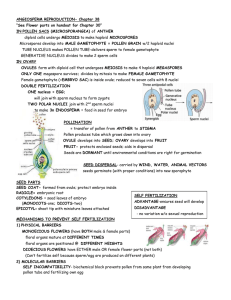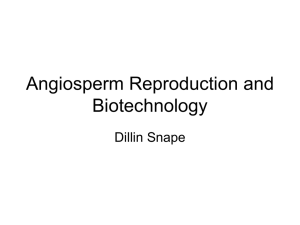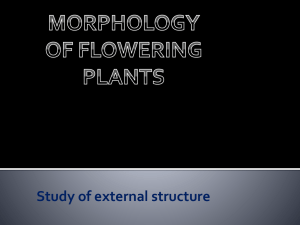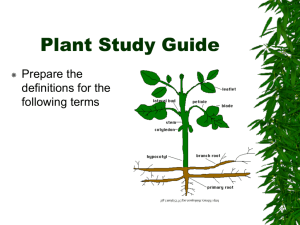Lecture #17 Date _________ Chapter 38 ~ Plant Reproduction
advertisement
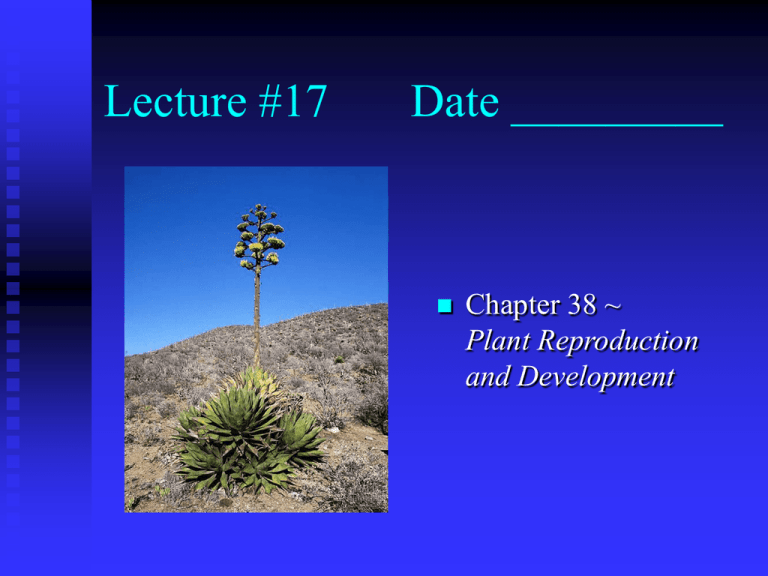
Lecture #17 Date _________ Chapter 38 ~ Plant Reproduction and Development Sexual Reproduction Alternation of generations: haploid (n) and diploid (2n) generations take turns producing each other Sporophyte (2n): produces haploid spores by meiosis; these spores divide by mitosis giving rise to male and female haploid plants called…. Gametophytes (n): develop and produce gametes Floral variations Floral organs: sepals, petals, stamens (male ), carpels (female) •complete: all 4 floral organs •incomplete: lacking 1 or more floral organs •perfect: both stamens and carpels on 1 flower •imperfect: lacking either a stamen or carpel •monoecious: staminate and carpellate flowers on 1 plant) •dioecious: staminate and carpellate flowers on separate plants Gametophyte development Male gametophyte: microsporocyte (in pollen sacs of anther) divides by meiosis into 41N microspores; mitosis produces a generative cell (sperm) and a tube cell (pollen tube)= a pollen grain Female gametophyte: megasporocyte (in ovule) divides by meiosis to 4 cells, only 1 survives to a 1-N megaspore; 3 mitotic divisions forms the embryo sac; includes: 1 egg cell (female gamete) and 2 polar nuclei (synergids) Double fertilization Pollination (pollen grain lands on a receptive stigma) Tube cell (pollen tube produced down the style) Generative cell (2 sperm by mitosis) Enters ovary through micropyle 1 sperm fertilizes egg to form zygote; other sperm combines with 2 polar nuclei to form 3n endosperm (food-storing tissue) Plant fertilization QuickTime™ and a Cinepak decompressor are needed to see this picture. The seed From fertilized ovule….. The mature seed: •seed coat (protection) •cotyledons (seed leaves) •hypocotyl (lower embryonic axis) •radicle (embryonic root) •epicotyl (upper embryonic axis) •plummule (shoot tip) •coleoptile (sheath for embryonic shoot) Seed development QuickTime™ and a Cinepak decompressor are needed to see this picture. The fruit From ovary…. Fruit protects seeds and aids in their dispersal Pericarp (thickened wall of fruit from ovary wall) Fruit types: •simple (1 ovary/1 flower)~ cherry, soybean •aggregate (1 flower with many carpels/ovaries)~ blackberry •multiple (inflorescence; group of flowers/ovaries) ~ pineapple Fruit development QuickTime™ and a Cinepak decompressor are needed to see this picture. Seed germination Seed dormancy (low metabolic rate and growth suspension) Imbibition (uptake of water) Radicle 1st, then shoot tip (hypocotyl); stimulated by light Germination
